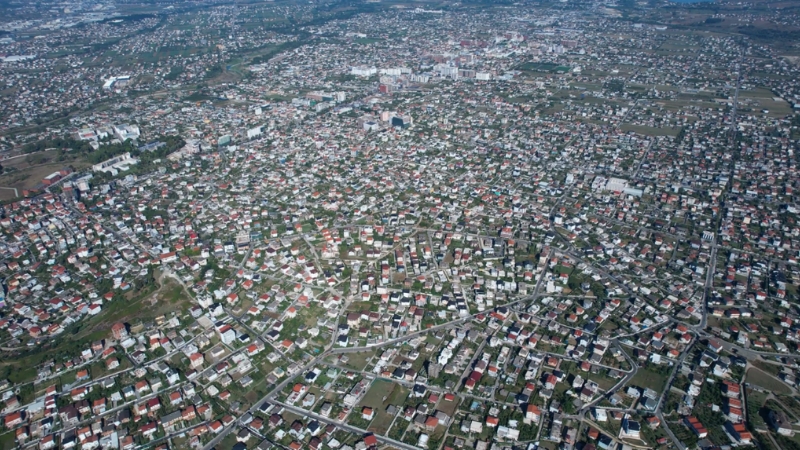Population data for 2025 shows a clear pattern across the United States: people continue to move south and west, while much of the Northeast and Midwest struggles to hold steady or is quietly shrinking.
According to the latest U.S. Census Bureau estimates and state demographic reports, Florida, Texas, Idaho, South Carolina, and North Carolina lead the nation in population growth this year.
Meanwhile, states like Mississippi, Vermont, West Virginia, New York, and Illinois are experiencing flat or declining numbers as residents leave for regions with lower costs, warmer weather, or stronger economies.
This ongoing demographic shift is reshaping the country’s economic and political balance. Fast-growing states attract new businesses, investment, and congressional seats, while slower-growth regions face labor shortages and shrinking tax bases.
The trends of 2025 continue what began years ago, but the divide between “gaining” and “losing” states has never been clearer.
Table of Contents
ToggleStates With Highest Growth in 2025

The states growing fastest in 2025 have a few things in common: job opportunities, affordable housing relative to major coastal cities, and warmer climates that appeal to retirees and remote workers alike.
Rank
State
Growth Drivers (2025)
Approx. Growth Rate (2024–25)
Key Cities Adding Residents
1
Florida
Migration from the Northeast and Midwest; booming retirement communities; no state income tax
~1.9%
Tampa, Orlando, Cape Coral, Jacksonville
2
Texas
Rapid job creation, strong tech and energy sectors, and affordable housing compared to California
~1.6%
Austin, Dallas-Fort Worth, Houston, San Antonio
3
Idaho
High quality of life, low crime, and affordable property; major in-migration from California and Washington
~1.4%
Boise, Meridian, Coeur d’Alene
4
South Carolina
Growing coastal cities, new manufacturing jobs, and migration from the Northeast
~1.3%
Charleston, Greenville, Myrtle Beach
5
North Carolina
Research Triangle tech growth, retirees moving from northern states, and lower living costs
~1.2%
Raleigh, Charlotte, Wilmington
Florida: America’s Migration Magnet
Florida continues to lead in net in-migration. According to recent data, it added nearly 400,000 new residents over the past year.
Affordable housing (compared to New York or California), a warm climate, and zero state income tax make it especially attractive to retirees and remote workers. Counties like Lee, Pasco, and Polk are growing at some of the fastest rates in the country.
Texas: The Economic Engine of the South

Texas ranks second overall but first in raw population gain. The state adds more than half a million new residents annually, fueled by corporate relocations and steady job growth in tech, logistics, and healthcare.
Cities like Austin and Dallas are transforming into major national hubs, attracting both domestic and international migrants.
Idaho: Small State, Big Growth
Idaho remains one of the fastest-growing percentage-wise. Boise’s balance of affordability, safety, and outdoor recreation continues to lure families escaping high-cost states.
Though the pace has slowed slightly from the pandemic boom, it remains far above the national average.
South Carolina and North Carolina: The New Southeastern Power Duo
Here’s how fast populations are growing by race in SC, Census data shows https://t.co/M2lYUgo0P6
— The State Newspaper (@thestate) September 19, 2024
The Carolinas are evolving into major economic zones. South Carolina’s manufacturing expansion, particularly in electric vehicles and aerospace, is drawing skilled labor.
North Carolina’s tech sector, anchored by Raleigh’s Research Triangle, offers stable growth and rising incomes. Together, they form one of the strongest migration corridors in the country.
Population Growth and Access to Family Planning
Population shifts are not only driven by migration but also by natural population changes or births and deaths. States that maintain or increase fertility rates often have stronger healthcare infrastructure and better access to reproductive services.
Fertility clinics, for instance, play an important role in helping couples who face challenges conceiving. Organizations such as ingenes.com, a well-known fertility clinic, represent the type of specialized medical centers that contribute to family growth by offering assisted reproduction services.
These facilities are part of a broader healthcare ecosystem that influences demographic patterns, particularly in states focused on improving maternal and reproductive health outcomes.
5 States With the Highest Decline in 2025
While the South and West keep expanding, parts of the Midwest and Northeast are losing residents. High housing costs, cold winters, and slow job creation remain key factors.
Rank
State
Trend (2025)
Approx. Change
Main Reasons for Decline
1
Mississippi
Population decrease
-0.2%
Out-migration of young adults, limited economic growth
2
Vermont
Population loss after brief pandemic rebound
-0.15%
Aging population, lack of job opportunities
3
West Virginia
Continued decline
-0.3%
Aging workforce, low birth rates, and limited urban centers
4
New York
Large numeric population loss
-102,000 residents (approx.)
High cost of living, post-pandemic out-migration
5
Illinois
Ongoing decline
-80,000 residents (approx.)
Out-migration to cheaper nearby states (Indiana, Iowa, Tennessee)
Mississippi and West Virginia: The Struggle to Retain Youth
Both Mississippi and West Virginia face a long-term demographic challenge, as young people leave for education or jobs and rarely return. Low wage growth and limited economic diversification make it difficult to compete with growing regions.
These states have some of the nation’s lowest labor-force participation rates and median household incomes.
Vermont: Aging and Quiet Decline
Vermont’s picturesque landscape and small towns attract tourists but not enough permanent residents. After a brief boost from pandemic-era remote work, population growth has reversed.
The state’s median age now exceeds 43, one of the highest in the nation.
New York: Losing Its Edge
Once a magnet for immigrants and young professionals, New York has seen a steady outflow to southern states like Florida and Texas.
High taxes, housing costs, and office-to-remote transitions have slowed its recovery. Even New York City, while rebounding in tourism, has yet to regain its pre-2020 population levels.
Illinois: The Midwest Exodus Continues
Illinois’s population slide has persisted for nearly a decade. Out-migration from Chicago’s suburbs toward neighboring states has accelerated.
Rising property taxes and fiscal concerns continue to drive working families and businesses toward nearby Indiana and Wisconsin.
Broader National Trends
Region
General Trend
Notes
South
Rapid growth
Driven by affordability, lower taxes, and warmer weather
West
Moderate growth
Still expanding, but slowed by housing shortages
Midwest
Stagnant or slow decline
Manufacturing shifts and out-migration
Northeast
Declining or flat
High costs, aging population, and urban outflow
America’s growth story is increasingly defined by mobility. Retirees seek warmer climates, families look for space and affordability, and companies relocate to states with favorable tax climates.
The movement southward is not temporary; it’s structural. The population center of the U.S. continues drifting toward the lower Sunbelt, where jobs and homes remain attainable.
Outlook for 2026 and Beyond

According to ongoing Census projections, southern states will continue to dominate population growth through the next decade. Florida and Texas alone are expected to account for nearly 30% of total U.S. growth by 2030.
In contrast, states like New York and Illinois may stabilize only through immigration inflows or policy reforms that address affordability and taxation.
The United States is, once again, on the move, but the destinations are changing. The country’s demographic future belongs to the regions that offer opportunity, comfort, and affordabili ty, and in 2025, that means the South and the West.
Related Posts:
- US States with the Highest and Lowest Dental Care…
- Which States Have the Highest and Lowest Income Tax in 2025?
- 5 States With the Highest and 5 Lowest Healthcare…
- 10 Lowest IQ States in US 2025 - Full Data,…
- US Population Hits 340.1 Million, Marking Highest…
- What Is the Lowest Currency in The World 2025?…








